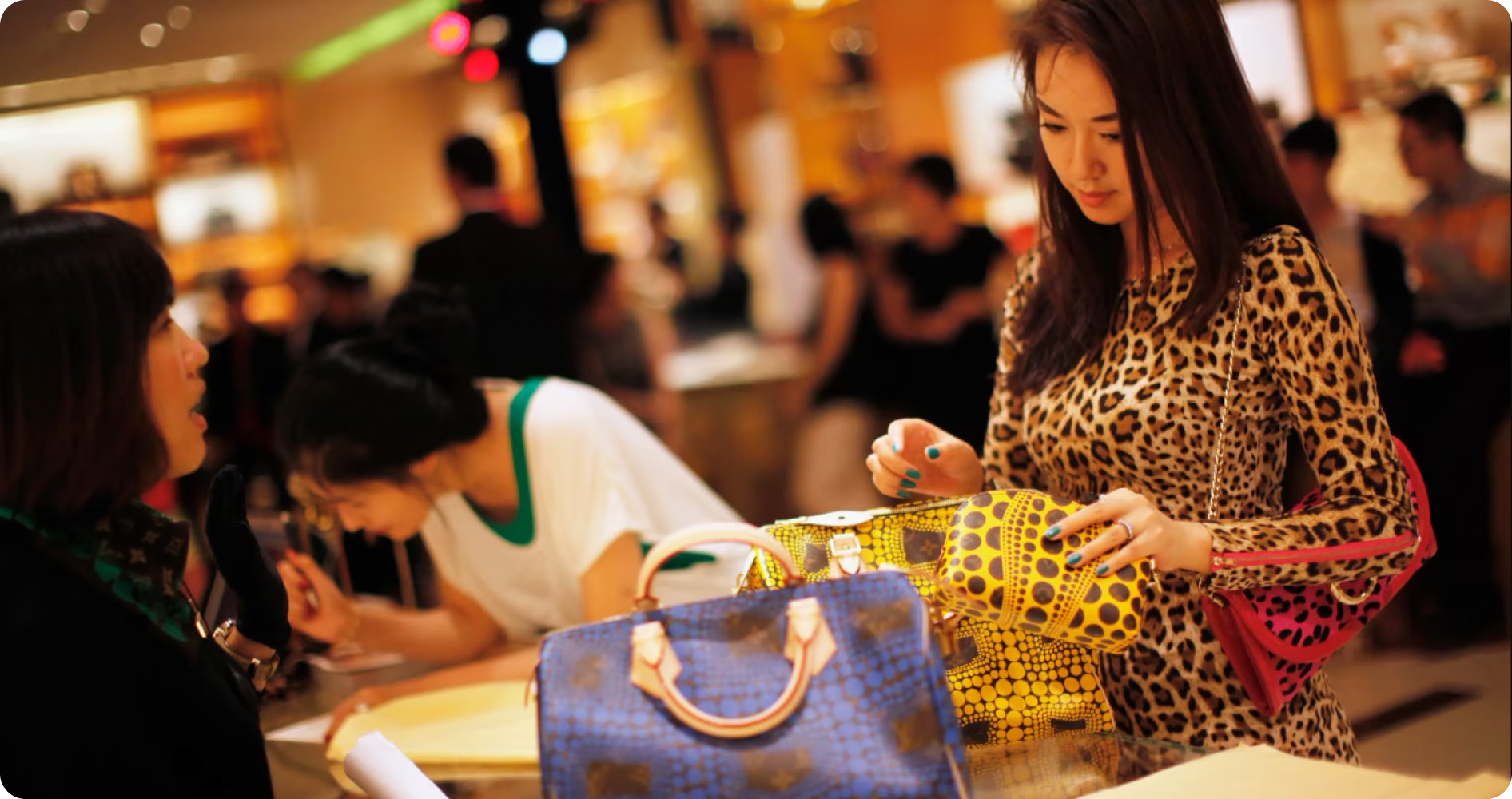Is 2024 Set to Spark Another 'Golden Year' for Luxury Retail in China?
As the Chinese New Year dawns, its economic impact is felt worldwide, especially in the luxury retail industry.

Is 2024 Set to Spark Another 'Golden Year' for Luxury Retail in China?
This time of year, characterized by lavishness and spending, sheds light on changing travel and spending habits among Chinese tourists, which can significantly affect global luxury brands. Understanding these shifts is crucial for consultants and decision-makers aiming to navigate the nuanced landscape of international luxury retail effectively.
Changing travel patterns
In the past few years, the economic uncertainties have led to a noticeable change in the travel habits of Chinese tourists. Traditionally, long-haul international trips were preferred to celebrate the Chinese New Year, with Europe and the US being popular destinations. These trips were more than just trips; they were elaborate commemorations of heritage and wealth, where luxury shopping in the renowned cities of Paris, London, and New York played a major role in the festivities. These destinations, well-known for high-end retail, have traditionally experienced an influx of Chinese tourists eager to indulge in the extraordinary combination of cultural and shopping experiences.
However, there has been a shift towards domestic and regional travel, reflecting a more cautious approach to spending amidst economic fluctuations. This change highlights the adaptability of Chinese consumers and also indicates a transformation in the global luxury market dynamics, with significant implications for brands worldwide.

Impact on luxury spending
Chinese tourists' interest in luxury shopping remains strong despite the pivot towards domestic and regional travel. However, this change in travel patterns has affected where and how they spend their money.

In the past, they would often travel to far-off destinations, which served as epicenters for luxury retail. The local economies of these destinations benefited significantly from the high-end purchases made by Chinese tourists. Now, with the focus on closer and more familiar locales, luxury brands need to rethink their global strategies. They may need to focus more on regional hubs and e-commerce platforms to capture the interest of this resilient consumer segment. This shift in consumer behavior highlights the importance of luxury retailers adapting to changing trends while continuing to engage with this crucial demographic.
Future trends in Chinese retail
As we navigate through these shifting sands, the luxury market is undergoing subtle transformations. The rise in the consumption of luxury goods within China, especially in emerging luxury destinations like Hainan, is a clear indication of the changing trends in the global luxury market.

Hainan has become a hub for luxury retail innovation by combining duty-free shopping with an upscale shopping experience. This trend not only shows the increasing sophistication of Chinese luxury consumers but also indicates a broader shift towards regional markets gaining importance, which could redefine traditional global luxury retail strategies.
Luxury brands must anticipate and adapt to these trends by using digital innovation and localized marketing strategies to connect with Chinese consumers wherever they choose to shop or travel. This strategic flexibility will be crucial in capturing the changing preferences of a demographic that is fundamental to the luxury sector's growth.
This approach ensures the narrative remains informative, providing valuable insights into the dynamic relationship between Chinese consumer behavior and the global luxury market.
Implications for luxury retail
The changes in Chinese consumer behavior and the growth of new luxury destinations such as Hainan have significant consequences for luxury retail. Brands need to shift their focus towards omnichannel strategies by integrating digital and physical retail in order to cater to a more dispersed and digitally advanced consumer base. An example of adapting to these shifts is how retailers personalized their services during Europe's Covid lockdowns by contacting customers via WhatsApp with tailor-made recommendations. It will be increasingly crucial to emphasize personalized customer experiences online and in-store. Additionally, understanding regional preferences and adapting marketing approaches to suit diverse Chinese consumer groups will be essential to capturing market share in this ever-evolving landscape.
Conclusion
The global luxury market is at a critical juncture due to the shifting dynamics of Chinese luxury consumption. Chinese consumers are now focusing more on domestic markets and selective international travel. To succeed in this market, luxury brands will need to be agile, innovative, and have a deep understanding of the changing desires of Chinese consumers. By strategically adapting to these developments, luxury retailers can secure their position in a market that is constantly changing.
Why Trendtracker should be your strategic partner
Navigating the retail scene in Asia can feel like trying to catch a high-speed train—it's fast, dynamic, and if you're not prepared, you might just miss out. That's where Trendtracker steps in, your indispensable ally in the business arena, fueled by advanced AI technology. This isn't just another tool; it's your strategic partner, vigilantly monitoring market trends and consumer shifts, ensuring you're always equipped with actionable and intelligent insights.
The beauty of Trendtracker lies in its simplicity and accessibility. No need to be a data scientist to make sense of it all. It's designed for the decision-makers and the strategists—the people who steer the ship. With Trendtracker in your toolkit, you're not just reacting to the latest trends; you're staying ahead, crafting strategies that resonate with your audience. It's all about making informed moves with confidence, ensuring your company doesn't just ride the wave but helps shape the future of retail in this vibrant, ever-evolving market.
.avif)

.avif)
-p-1080.avif)


